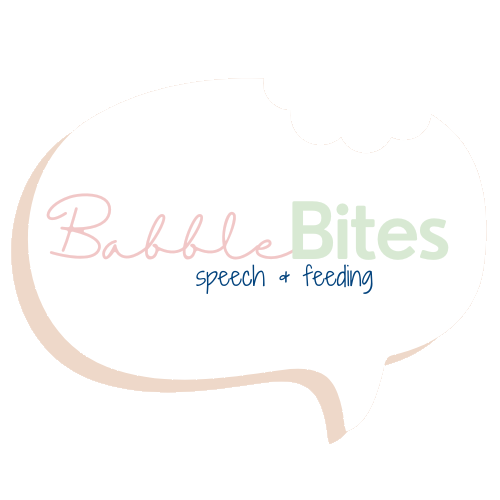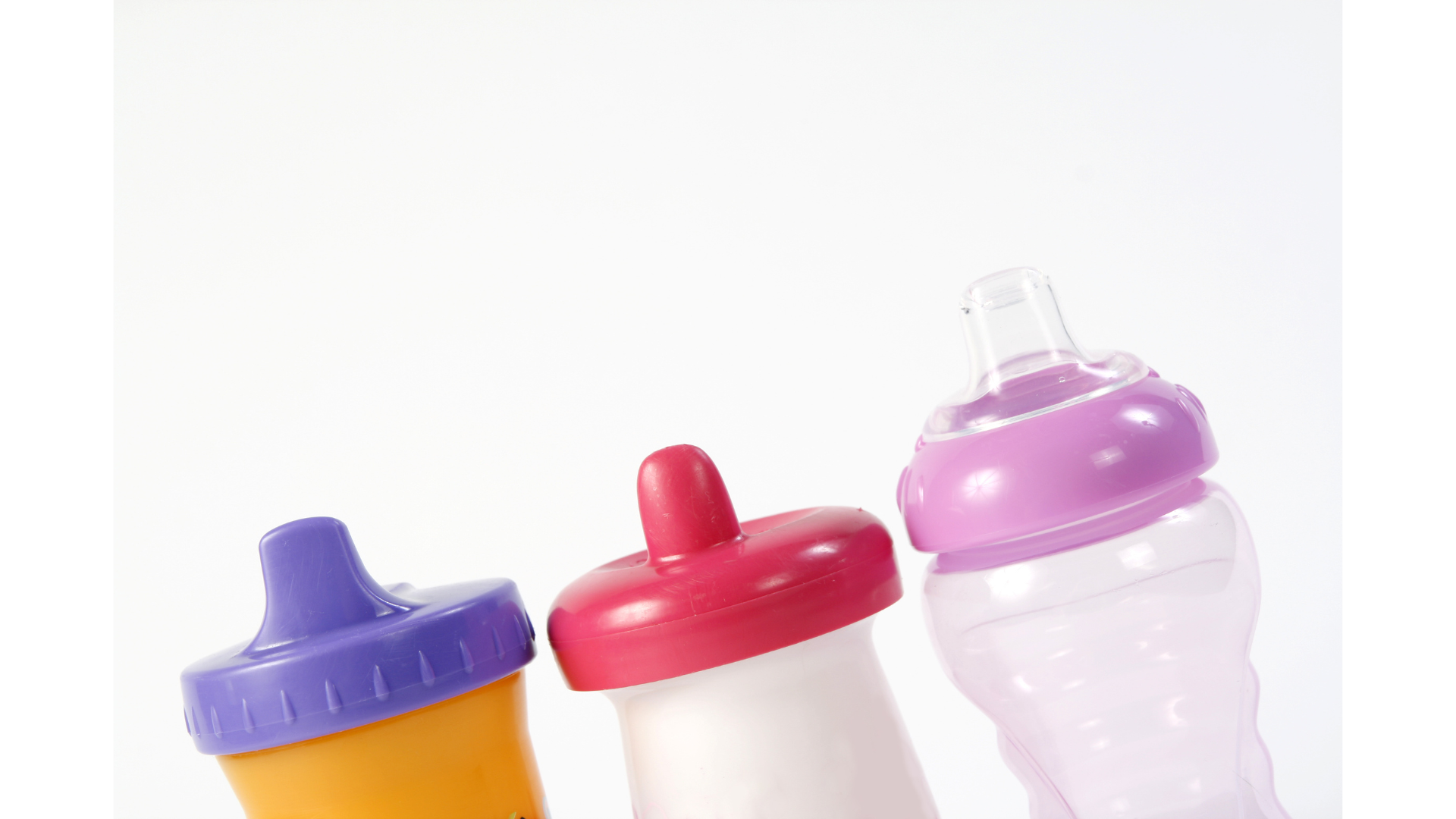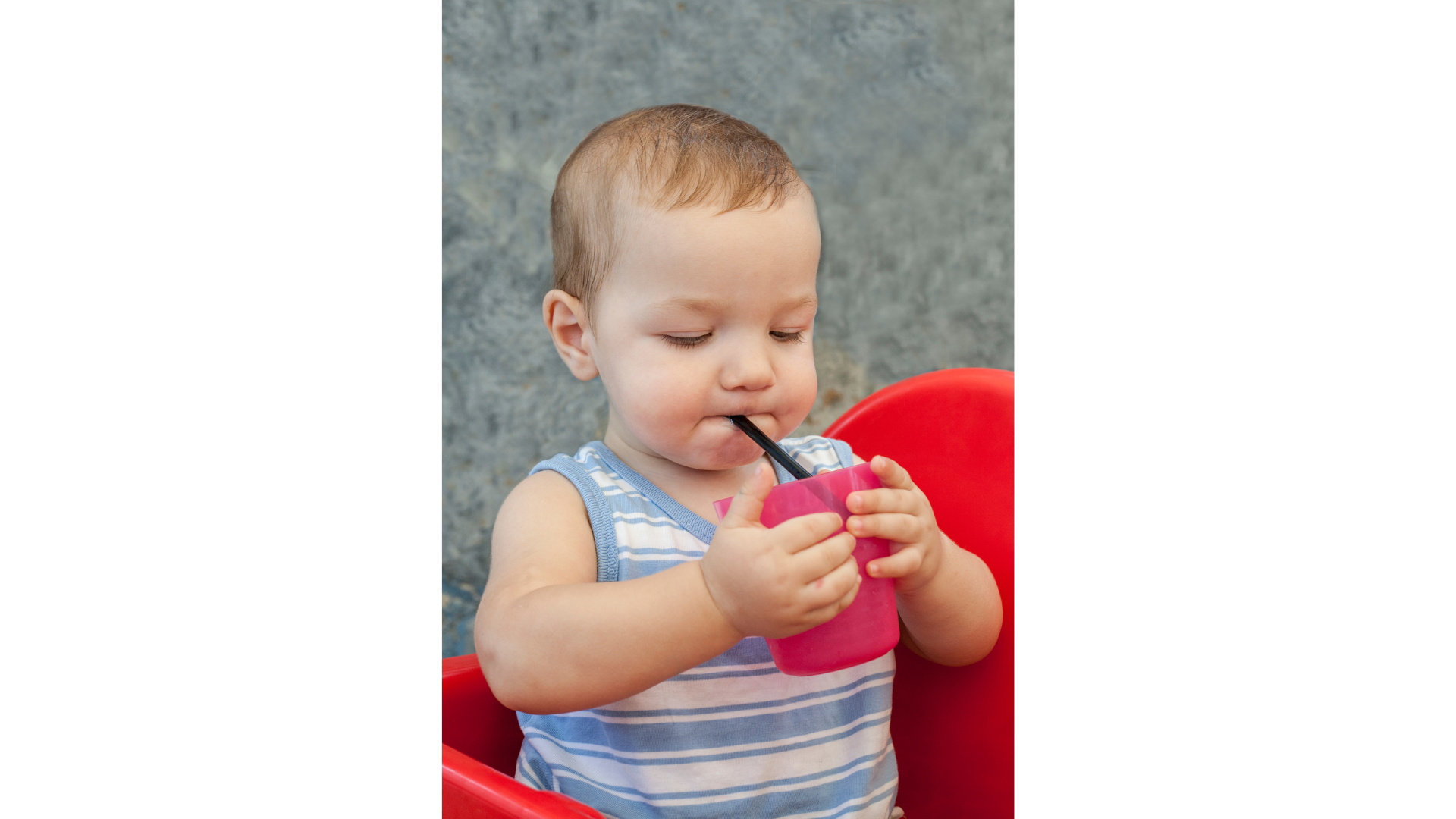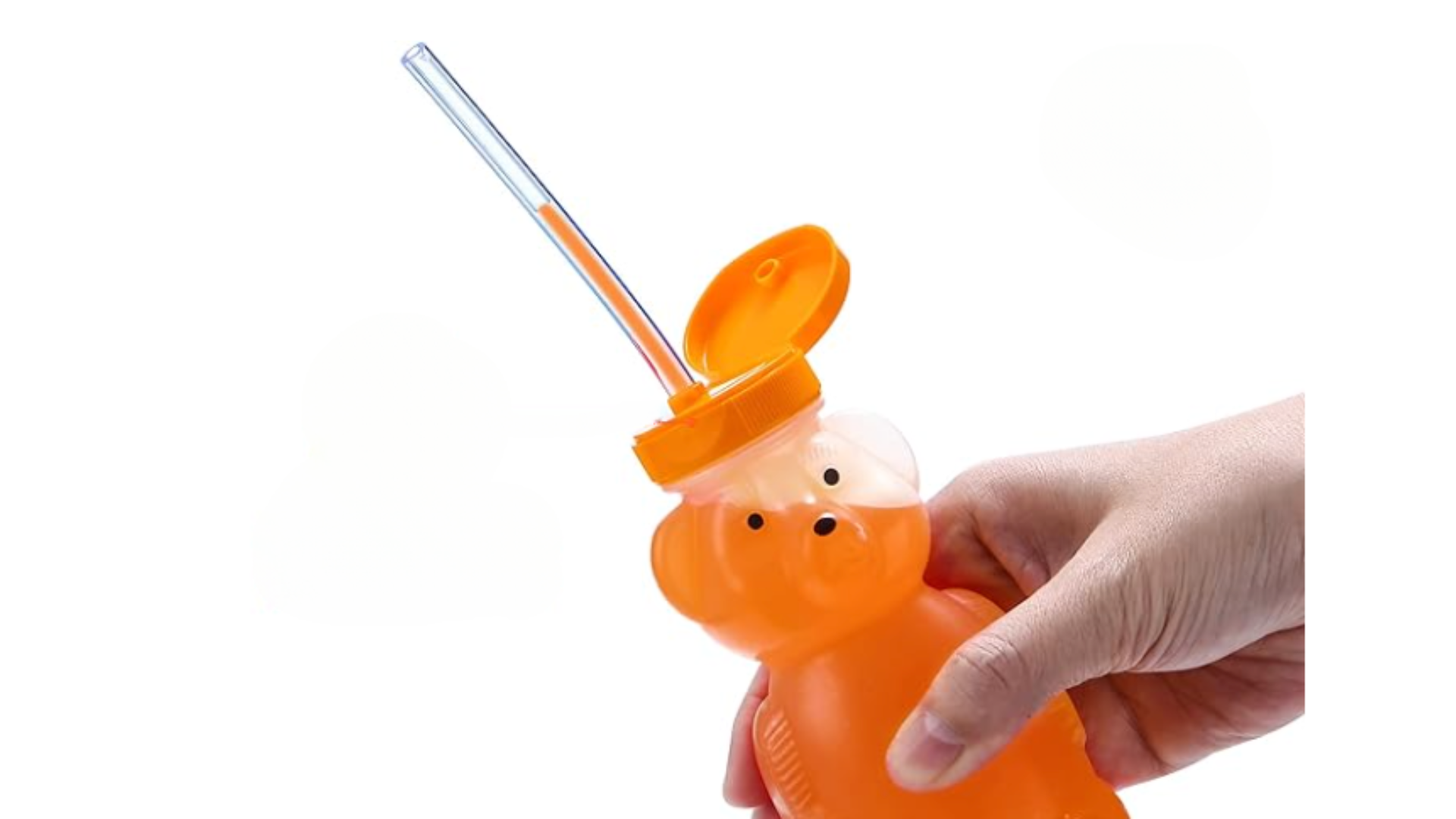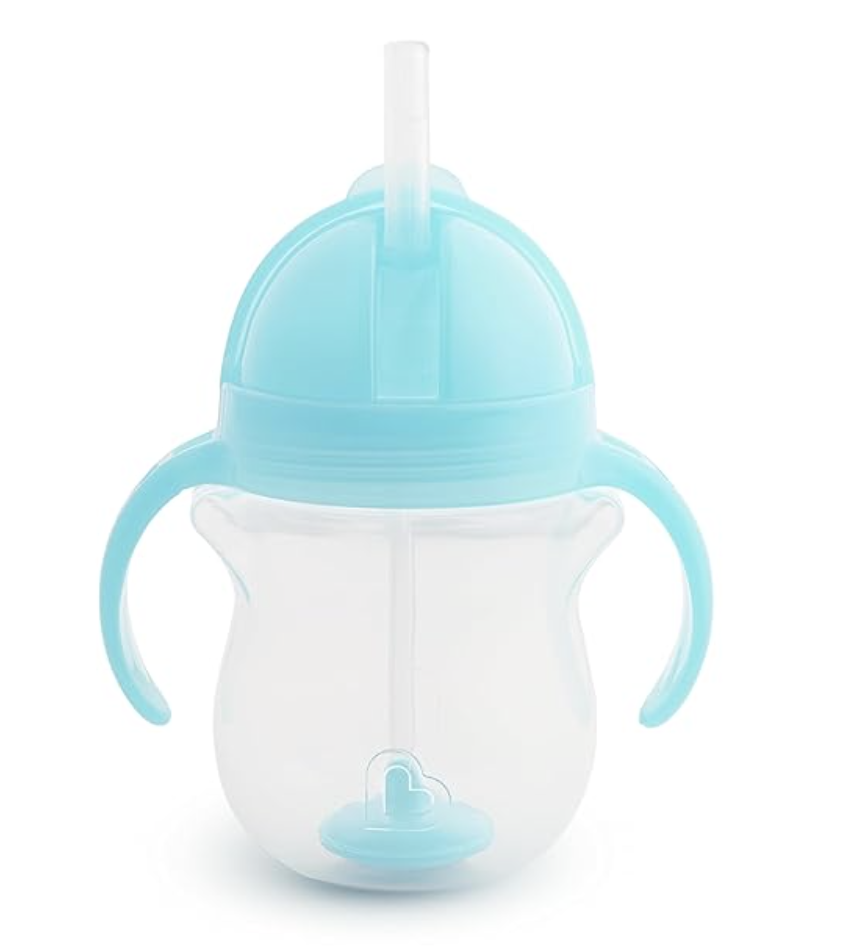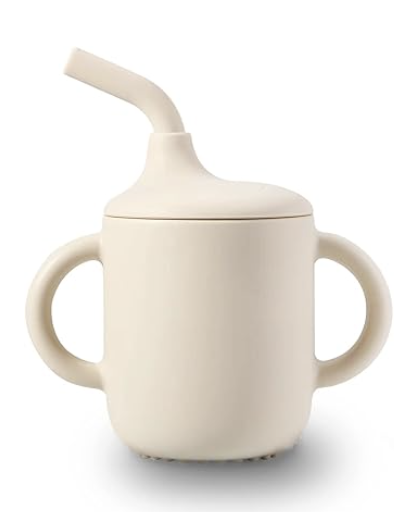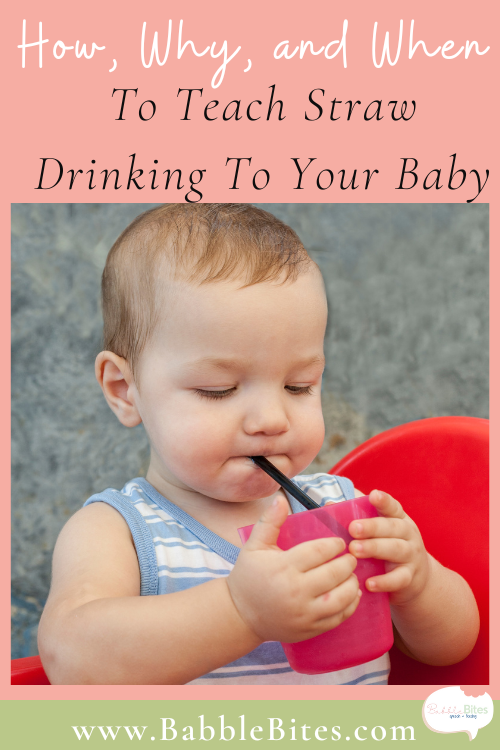How, Why, and When to Teach Straw Drinking To Your Baby
Skip the sippys and teach your baby straw drinking!
Many parents have been led to believe by marketing that sippy cups are the next developmental stage after bottles. What most professionals that address oral development will agree on (e.g. feeding therapists, dentists), is that sippy cups were invented for convenience, not advancing your baby’s skills.
Why not spouted sippy cups?
Sippy cups with spouts (both hard and soft spouts) promote a sucking pattern that’s very similar to drinking from the bottle, and restricts the tongue’s movements. Prolonged use of bottles and spouted sippy cups can perpetuate an immature swallowing pattern (referred to as a tongue thrust, or reverse swallow), making it harder for them to advance their feeding skills with both liquids and solids.
Prolonged use of sippy cups and bottles (and pacifiers), past around 12 months of age, can also cause malformations of the oral structures, such as an open bite (i.e. a bite problem where the top and bottom teeth do not come together correctly). This can result in speech sound errors, as well as the need for later orthodontic intervention.
Prolonged use of bottles, sippy cups, pacifiers, thumb sucking, and forward resting position of the tongue can lead to the development of an open bite.
Not only this, but drinking liquids other than water from a sippy cup can cause the development of cavities, especially if offered throughout the day and during naps. The convenience and spill-free nature of these types of sippy cups make it easier to offer milk and juice to children throughout the day creating more exposure to sugary liquids.
Any exceptions?
Using spouted sippy cups occasionally, especially with water only, is not likely to have a significant impact on oral development. What we’re talking about here is prolonged use, which includes all day access, using past 12 months of age as the primary drinking vessel, and late introduction to straws and open cups. Drinking from a sippy cup is also a temporary skill, while drinking from a straw and open cup are lifelong skills, so why not start here and skip the sippys? If you need to or prefer to use a sippy cup some of the time, go for it. Just make sure to also be introducing your baby to the open cup and straw!
Additionally, it is possible that children with feeding delays may require the use of a sippy cup in very specific cases. It’s best to discuss cup recommendations for your child with their treatment team.
Why drinking from a straw is recommended instead of spouted sippy cups
While spouted sippy cups can actually end up hindering oral development, learning to drink from a straw can lay strong foundational skills for advancement of feeding development. When we drink from a straw, it promotes a mature swallow pattern (front to back movement, rather than thrusting the tongue forward), as well as strengthens lip and cheek muscles. In addition to teaching your baby to drink from a straw, it’s also recommended to work on open cup drinking, as this also promotes proper oral development.
When can babies learn to drink from a straw?
Practice drinking from a straw so your baby can learn prior to 12 months of age.
Babies can learn to drink from a straw as early as 6-9 months of age.
As with the introduction of solids, we want baby to be showing readiness signs, including holding their head up independently, and sitting with little to no assistance.
Cautions with straw drinking
It should be noted that with a straw, liquids come out faster and with an increased volume towards the back of the mouth compared to a bottle/breast, so this may cause coughing while your baby is learning to coordinate this new skill. If your baby is frequently coughing even after some practice, consider waiting until they are closer to 9 months of age, and work on the open cup in the meantime.
Frequent coughing and/or a change in vocal quality (e.g. wet sounding) after drinking liquids could be a sign of aspiration (i.e. liquid entering the airway) and could lead to pneumonia over time if left unchecked. If this is a concern of yours, speak to your pediatrician, and they may recommend a swallow study (done under moving x-ray or with an endoscopic camera).
Using thicker liquids with a straw
You can also practice with a thicker liquid, like a smoothie, as this will move more slowly and give baby more time to coordinate their swallow. Colder liquids helps with this, as well. Practicing with thicker liquids like yogurt drinks and smoothies can also help increase the strength of oral muscles, as the thicker texture creates more resistance.
Practice in order to prepare for weaning
It is recommended that babies be weaned from the bottle around12 months of age (the AAP recommends weaning between 12-18 months of age). We want to give babies plenty of practice with straws and open cups prior to 12 months of age, so that by 12 months old they are ready to transition off of bottles. If we don’t give baby practice with these new cups before we want to wean from the bottle, we aren’t setting them up for success.
How to teach your baby to drink from a straw
While it is possible for some babies to learn to drink from a straw on their own (i.e. giving them a cup with a straw and hoping they figure it out on their own, or learning by watching someone else), most babies require some teaching. There are two methods to teach your baby to drink from a straw: the pipette method and the straw training cup method.
The Pipette Method:
This is an easy to use method that involves the use of a regular straw. A regular plastic straw works great. Avoid using a straw that is too thick (e.g. a smoothie straw) or too thin (e.g. a coffee straw).
You can cut a plastic drinking straw in half for the pipette method.
Make sure your baby is seated in an upright position, with their feet supported.
Take a regular plastic straw, dip it into a small amount of liquid (not more than ~1 inch), and plug the top with your finger so the liquid stays inside.
Hold out the opposite end up the straw (the end with the liquid in it) to offer it towards your baby’s mouth, and wait for them to open their mouth to accept it.
If they do not open their mouth to accept it, model it with yourself a few times to show them what you want them to do.
When your baby accepts the straw into their mouth, take your finger off the other end of the straw, to allow the liquid to go into your baby’s mouth (again, make sure it’s not too much liquid).
As long as your baby stays interested, do this a few times in a row, and eventually your baby should start to close their mouth onto the straw.
You can gently touch their cheeks to help them round their lips onto the straw, as well as show them with your mouth, if they are not doing this independently.
When they do start to close their lips on the straw, keep your finger plugging the liquid so they have to suck in order to get the liquid out. You can also model a sucking motion to show them what they need to do. Start to add a little more liquid to the straw.
Once they are starting to suck the liquid out of the straw while it’s plugged, place the straw directly into the cup and see if they are able to take a sip. It’s best to try this with a short straw first (e.g. cut a plastic straw in half) so there is a shorter distance they have to suck to be successful.
Steps 1-8 may need to be practiced across several days or even weeks before being able to move onto step 9. That’s okay, just keep practicing!
The Straw Training Cup Method
This method can be used if the pipette method has not worked to teach your baby to drink from a straw. You can use this method right away as well, but since it requires buying a specific cup, I typically recommend trying the pipette method first. My favorite cup for his method is the Honey Bear cup. The Munchkin Take and Toss straw cups are also capable of creating the vacuum seal needed to use this method. A clear cup and straw allows you and your baby to see where the liquid is in the straw.
Fill the cup with water, formula, or breast milk and squeeze the cup to push the liquid up the straw.
Make sure your baby is seated in an upright position, with their feet supported.
Fill the cup with liquid (water, breast milk, or formula), and offer the straw towards your baby’s mouth. You can cut the straw to make sure it is not too long, as we don’t want too much in their mouth at once, and a shorter straw will also make it easier for your baby to extract the liquid.
When they open their mouth to accept the straw, give a gentle squeeze to the cup, which will squeeze some liquid into their mouth.
*Tip: Try to already have the liquid squeezed up towards the top of the straw when you offer it to your baby so that you can have the liquid ready to squeeze right into their mouth once they put their mouth on the straw, and you will be less likely to give too big of a squeeze and get too much liquid in your little one’s mouth.
If your baby doesn’t open their mouth to accept it, model drinking from the straw. This step could last several days to weeks.
Many babies will automatically close their lips on the straw and start to suck once the liquid enters their mouth. If this happens, let go of the squeeze and allow your baby to take over.
If your baby does not yet close their lips on the straw, show them with your mouth what you are asking them to do. You can also give a gentle touch to their cheeks to help them round their lips on the straw.
Some babies will start sucking from the straw independently after a few rounds of this. Other babies will need you to slowly fade out how much you assist them to draw up the liquid from the straw. Try squeezing the liquid only part way up the straw, so your baby slowly learns to suck stronger until they are able to pull the liquid all the way up on their own.
When to practice with the straw
Plan to offer liquids through a straw or open cup at every solid food meal. You can plan to practice straw cups at one meal, and open cups at another, or work on just straw drinking or open cup drinking at every meal for a few weeks until your baby gets the hang of it, then switch to the other until they master both the straw and open cup. It’s helpful to introduce a variety of different cups so your baby learns to drink from different types of cups, and does not get “stuck” on one specific cup.
It takes practice to learn good lip rounding on the straw.
Recommended straws
When it comes to straws, not all cups are created equal. We want to look for a thin straw that is firm and not too soft/flexible. If the straw is flat, wide, and/or too pliable, it does not promote the optimal tongue positioning. Additionally many “no-spill” straws have a bite valve, which promotes biting on the straw, rather than proper use of the lips, tongue, and cheeks. Again, if your child drinks from a flat wide straw some of the time, this is not a big deal. The idea is that we also want to provide opportunities for other, more optimal straws, and for your baby to learn to drink from a variety of cups.
As an Amazon Associate, we earn from qualifying purchases. This means that at no additional cost to you, if you make a purchase through certain links on this site or any related social media platforms, we may make a small commission. We only feature products that we believe in and use ourselves. Your support means the world to us and allows us to host this website. Thank you!
Here are my favorite straw cups:
This can be used as an open cup or straw cup. The straw is firm, thin, and short, so it’s optimal for developing oral skills. There are also bumps on the straw to serve as a tactile cue to your baby for how far their lips should go on the straw.
This straw cup is insulated to keep drinks cold, and has a thin sturdy straw. Additionally, it has a flip top to keep it leak-proof for when you’re on the go. It does not contain a valve in the straw, which makes it ideal for babies that have a hard time pulling liquid up through valved no-spill straws. Just be aware that it will spill if turned upside down.
These are useful because they can turn pretty much any open cup into a spill resistant cup for straw drinking. The top can also fit a variety of straws, so it is pretty versatile!
This is a nice on-the-go straw cup, with the ideal straw shape. It has a weighted straw so your baby can get liquid even if they tip the cup. The straw has a valve which helps minimize spills, but does make it more difficulty to extract liquid, so some babies have difficulty with it.
This is a good option if your little one prefers a cup with handles, and the angled straw helps aim the straw into their mouth without trying to tip the cup.
The Honey Bear cup is a favorite among feeding therapists to teach straw drinking to babies (learn how above). The clear cup and straw is also helpful for both you and your baby to see where the liquid is in the straw. You can continue to use them even once your baby has mastered drinking from the straw independently. Sometimes the straws come very long and need to be cut to a more ideal length.
When to seek out help for feeding concerns
If you notice frequent coughing while eating or drinking at any age, mention it to your pediatrician. They may recommend a swallow study (Modified Barium Swallow Study/Videofluoroscopic Swallowing Study, or Fiberoptic Endoscopic Evaluation of Swallowing) to make sure there are no liquids or solids entering the airway that could lead to infections. If by 9-10 months of age your baby is having difficulty transitioning to soft solid foods, speak to your pediatrician and ask for a referral to a feeding therapist (feeding therapists have the title of speech-language pathologist (for oral motor and/or sensory issues) or sometimes occupational therapist (for sensory or self-feeding difficulties)). If you notice any other concerns such as frequent gagging, vomiting, coughing, limited chewing, rejection of purees and/or solid foods, and/or limited variety of accepted foods, these are also reasons to seek out a referral for a feeding evaluation.
Follow us on Instagram for “bite-sized” information on each blog post:
Pin this post to save it for later and share to Pinterest!
This website and information on this blog post is provided for educational purposes only. It is not meant as medical advice, intended to replace a speech-language or feeding assessment, therapy from a speech-language pathologist, or serve as medical or nutritional care for a child. It is recommended that you discuss any concerns or questions you might have with your speech-language pathologist, pediatrician, and medical team, and develop an individualized team plan specifically for your child.
